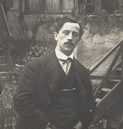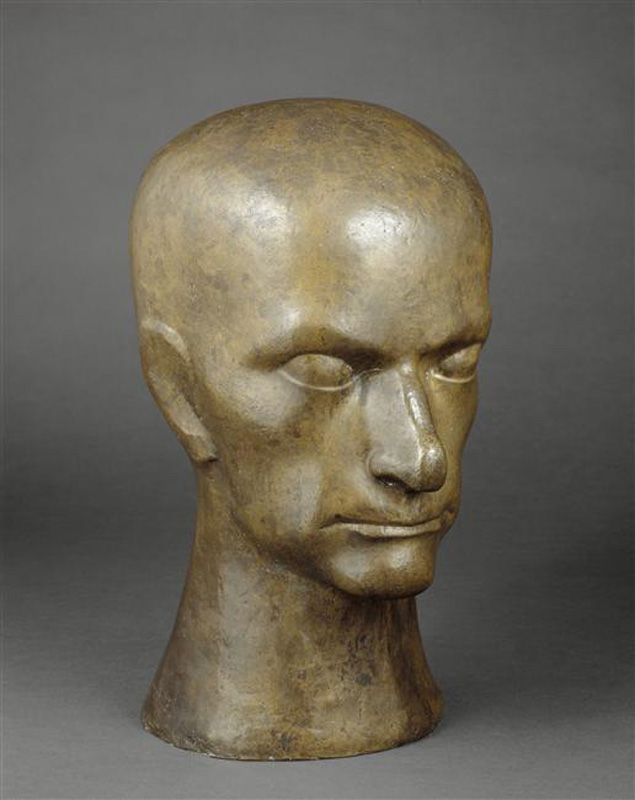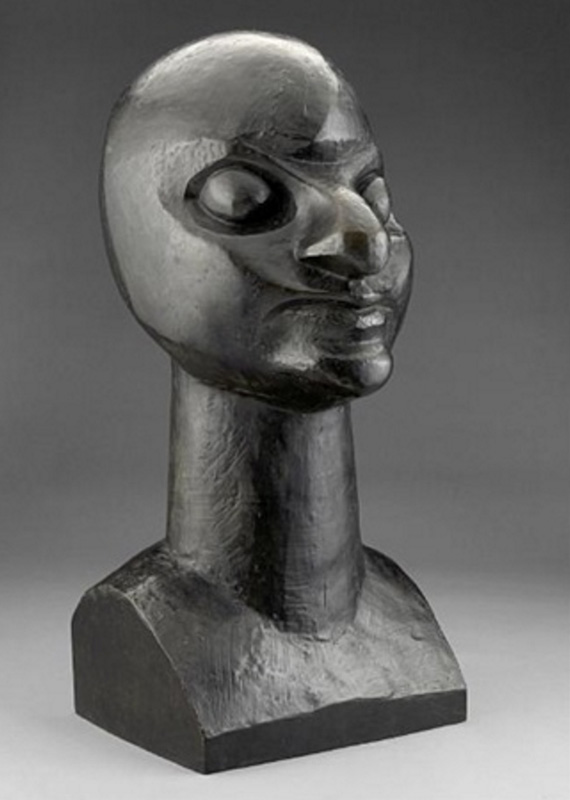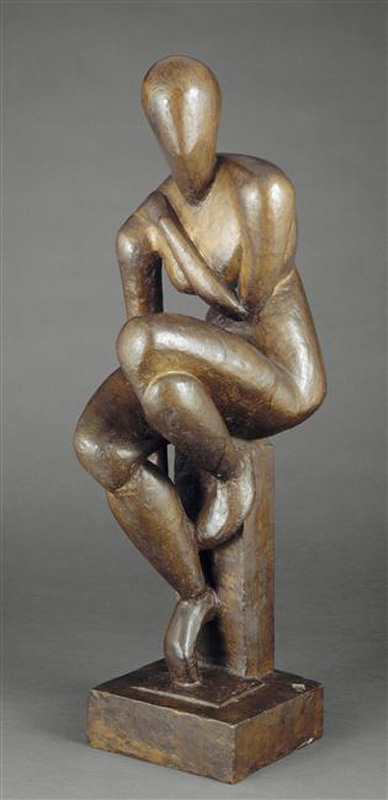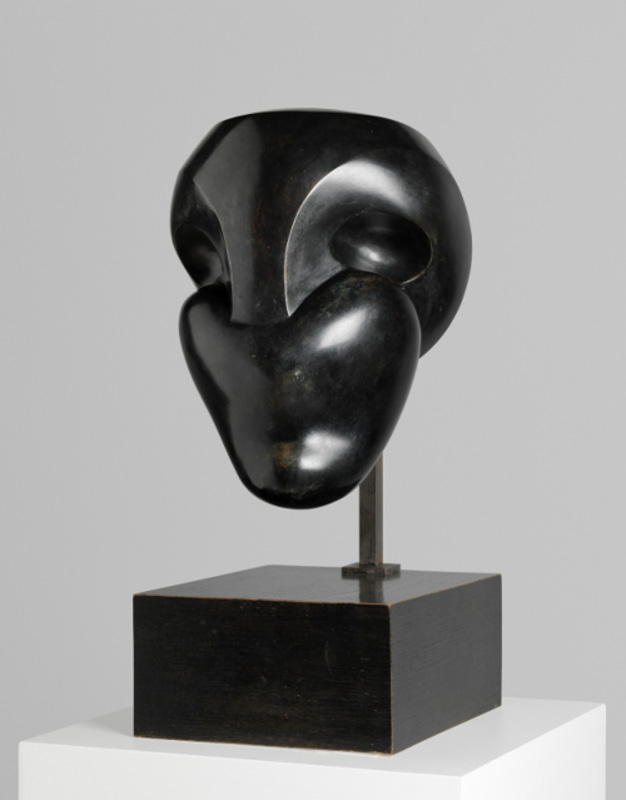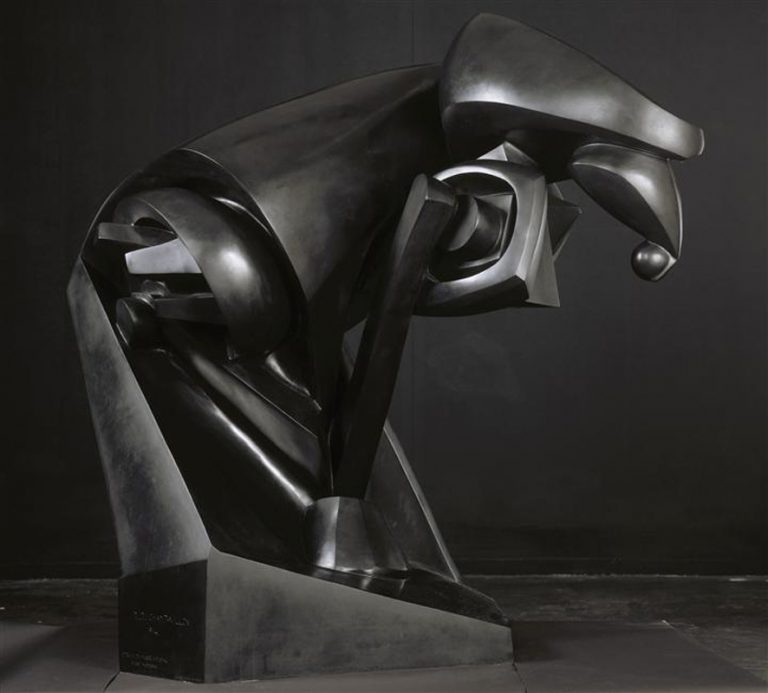The artistic beginnings
Raymond Duchamp, known as « Duchamp-Villon, » was born on November 5, 1876, in Damville (Eure). He was the second of six children, and notably, four of them fully committed to the arts: Gaston Duchamp, known as “Jacques Villon” (1875-1963), Marcel Duchamp (1887-1967), and Suzanne Duchamp (1889-1963).
In 1894, following his father’s encouragement, Raymond embarked on medical studies in Paris. He lived with his brother Jacques Villon, who had already embraced an art career, in Montmartre. Together, they actively participated in meetings with young artists. In 1898, after being struck by acute rheumatism that forced him to leave his medical studies, Raymond decisively turned to sculpture. Recognizing his undeniable passion for the medium, he dedicated himself entirely to it. To emphasize his artistic lineage, he adopted the name « Raymond Duchamp-Villon. » The distinct Art Nouveau style characterized his initial works.
The Group of Puteaux
In 1907, he decisively moved with his wife, Yvonne, to 7 Rue Lemaitre in Puteaux. There, he encountered his brother, Jacques Villon, and the Czech painter František Kupka, while Albert Gleizes was situated in Courbevoie and La Fresnaye in western Paris.
This was the pivotal time when the Puteaux artists’ meetings commenced, where they rigorously discussed key concepts such as the Golden Ratio, Marey’s chronophotography, the fourth dimension, and Bergson’s philosophy. The Puteaux group firmly championed a version of Cubism that centered on the plastic representation of movement, in stark contrast to the Montmartre group led by Braque and Picasso, who adopted a more analytical approach to Cubism.
A sculptor-architect
Raymond Duchamp-Villon was a formidable force in the artistic and intellectual landscape of his time. As a prominent writer and groundbreaking sculptor, he made a definitive impact with some of the most striking works of his generation. His portrait of « Baudelaire », displayed at the 1911 Salon d’Automne, showcases highly simplified volumes and radiates a commanding seriousness. Duchamp-Villon pushed the boundaries further with his bust of « Maggy », whose geometric construction and exaggerated features boldly assert his place within the realm of Cubist thought.
His commitment to the architecture of form reached new heights when he designed the façade of a private mansion, « La Maison Cubiste », for a decorative arts ensemble led by André Mare at the 1912 Salon d’Automne. This audacious work ignited a scandal that reverberated all the way to the French Chamber of Deputies, where Marcel Sembat passionately defended the Cubists. Duchamp-Villon’s contributions were not just significant; they undeniably reshaped the trajectory of modern art.
Historical exhibitions
At the same time, the Puteaux group called itself the “Section d’Or” and organized a salon at the Galerie de la Boétie. In addition to the Duchamp brothers, other artists exhibited included Archipenko, Delaunay, Kupka, Gleizes, Juan Gris, Léger, Metzinger, Picabia…
Their growing fame enabled Duchamp-Villon to welcome the Americans Arthur B. Davies and Walt Kuhn to his studio. Davies and Walt Kuhn to his studio through Walter Pach. His works, along with those of his two brothers, Jacques and Marcel, were selected to take part the following year in the International Exhibition of Modern Art in New York, known as the « Armory Show », alongside sculptures by Archipenko, Brancusi, Epstein and Lehmbruck.
Remaining in Paris, Duchamp-Villon prepared for the Salon d’Automne of 1913, for which he unveiled his bas-relief « Les Amants » in the cubist hall, combining movement and bodies with schematized lines, as well as the reliefs adorning André Mare’s boudoir.
World War I
When war was declared in 1914, he took the bold step of volunteering as an auxiliary doctor. During his leave, he focused intently on his research for « Le Cheval », a work that would become the cornerstone of his career.
In late November 1916, he was hospitalized with typhoid fever, contracted from caring for the sick. While there, he was treated by Professor Gosset, with whom he forged a lasting friendship and painted a notable portrait.
Unfortunately, Duchamp-Villon’s life was cut short when he passed away on October 7, 1918. His brothers, Jacques Villon and Marcel Duchamp, took charge of overseeing the casting of his bronze sculptures and the enlargement of his works, ensuring they were realized in strict accordance with the artist’s intentions.
